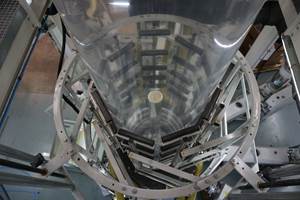I Need Technical Employees!
Learn the difference between employees who think abstractly and those who think concretely to help determine how they fit in your organization.
Some of your employees process information abstractly, while others process information concretely. Employers need both.
The vertical axis shown on the accompanying graphic is about the forces that drive people’s mindsets and behaviors. This relates back to the environment in which people were raised, how they spend their time, and what their motivation is.
The horizontal axis shows how people digest information, how people break down information, and how people arrange and use information. Individuals who live in daily instability often think concretely. Abstract thinking is not the dominant form in an unstable environment. When people think concretely, they are dealing with objects and/or events available to the senses. At work, this might be a forklift, conveyor belt, computer scanner, etc.

When employees think abstractly, they are dealing with ideas, concepts, and terms used to represent concrete steps or plans. This might take the form of a marketing plan, an initial public offering, or a profit/loss statement. Businesses operate with an abstract orientation. If an employee has only processed information from a concrete perspective when all information at work is given abstractly, there will be a huge disconnect.
Employees who think concretely are most often employees from daily instability. Those who think abstractly are often those who lead the business, develop long-term strategies, and negotiate deals that keep the company at the forefront of its particular industry.
If you have employees who process information and complete tasks differently, this may very well be the difference between processing information abstractly and concretely.
The vertical axis represents the influence that the two different driving forces have in the workplace: stability in the future story at the top, and relative instability at the bottom. This information shapes how employees are thinking and living and where their mindsets are when they are at work.
If you have employees who process information and complete tasks differently, this may very well be the difference between processing information abstractly and concretely. The difference can impact discipline policies, conflict resolution procedures, explanations of benefits packages, etc., and an understanding of the difference may help avoid misunderstanding.
The utility of the abstract/concrete axes is that when you think of employees, you can see which quadrant(s) they fit into—this information can be helpful in the mentoring and job-coaching process. Managers and human resource professionals can use the information to guide an employee into another quadrant and role based on corporate initiatives. The tool fits nicely with personality tests that may already be in use in the hiring and promotion process.
While employers can benefit from adopting the concrete language of their employees from daily instability, they should also remember to model abstract speech so employees develop the ability to use both.
According to the research, employers tend to hire the same demographic of employee that they let go. Let’s keep and develop the employees we have.
About the Author: Ruth K. Weirich, MBA, is an author, trainer, and management professional experienced in business operations efficiency and profitability. She is also a past president of aha! Process, an education and training company specializing in economic class issues. Contact: rkweirich@ahaprocess.com; ahaprocess.com.
Related Content
TAPPI to Provide Film Education Program at PTXPO 2023
Second-ever PTXPO will feature a robust education program on flexible film, with more technical programming in the works.
Read MoreThe Experience Curve and Well-Trained Process Technicians
Pairing external big picture training with internal job-specific instruction can help your process technicians meet quality expectations as well as production targets.
Read MoreBlow Molder with a Mission: CKS Packaging Shares Gains Of Its Phenomenal Growth
From three machines in 1986 to 27 plants nationwide today, this family-owned processor has prospered through unwavering customer service, committed employees and dedicated service to its community.
Read MorePlastics Processors Who Hire ‘Second-Chance’ Workers Do Well by Doing Good
Two blow molders with long-standing programs of hiring formerly incarcerated low-level offenders have helped these individuals re-enter their communities and have benefited from an additional resource during chronic labor shortages.
Read MoreRead Next
Making the Circular Economy a Reality
Driven by brand owner demands and new worldwide legislation, the entire supply chain is working toward the shift to circularity, with some evidence the circular economy has already begun.
Read MoreFor PLASTICS' CEO Seaholm, NPE to Shine Light on Sustainability Successes
With advocacy, communication and sustainability as three main pillars, Seaholm leads a trade association to NPE that ‘is more active today than we have ever been.’
Read MorePeople 4.0 – How to Get Buy-In from Your Staff for Industry 4.0 Systems
Implementing a production monitoring system as the foundation of a ‘smart factory’ is about integrating people with new technology as much as it is about integrating machines and computers. Here are tips from a company that has gone through the process.
Read More

























